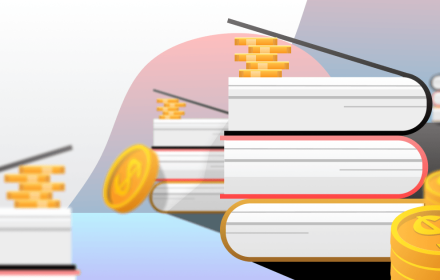How to invest for beginners is a question that arises when savings stop bringing joy to the account and start irritating with their uselessness. Inflation quietly “eats up” capital, and traditional deposits bring only a symbolic percentage. The modern market offers dozens of instruments, but without a clear selection system, it’s easy to lose money right from the start.
Investments for beginners: where to start
The capital market is vast, so a clear plan is required to start. Several steps help beginners invest without chaos: define goals, assess the investment horizon, understand the acceptable risk level.
Capital up to $5,000 is often allocated to conservative instruments — federal loan bonds with a yield of 10% per year. Long-term investments bring more returns, especially when considering shares of large companies, which grow on average by 8–12% per year in a stable economy.
Fundamental analysis allows evaluating a business based on reports, debt, profit, while technical analysis helps find entry and exit points on charts. It is important for novice investors not to confuse these approaches and not to make hasty deals based solely on emotions.
How to invest for beginners and choose instruments
Financial markets are divided into assets of different risk levels. To invest effectively as a beginner, it is important to understand the differences:
- Stocks — shares of companies, the yield of which can reach 15–20% per year but comes with high volatility.
- Bonds — debt securities with a fixed interest rate, suitable for capital preservation.
- Mutual funds — investment funds that allow entering the market with a small amount and diversifying without deep knowledge.
- Real estate — a stable asset, bringing in 4–7% in annual rent plus value appreciation.
An optimal strategy for beginners often combines several instruments: part of the capital is directed to bonds, part to index funds, and a small percentage to growth potential stocks.
How to learn investing from scratch
Financial literacy has become a mandatory skill. Learning how to invest for beginners involves studying specialized courses, reading broker analytics, and analyzing company reports.
Beginner investors’ mistakes are usually related to greed and lack of strategy. A common problem is buying assets at their peak without analysis. Another mistake is ignoring risk management: investing all funds in one instrument.
A Strategy That Works
Effective investments start with a clear system that helps avoid succumbing to emotions and control risks. This approach allows for building long-term capital growth without hasty decisions and random losses.
Key elements include:
- Asset allocation among different classes,
- Diversification — dividing investments among sectors and countries,
- Regular portfolio review,
- Clear risk management — limiting losses to 5–10% per position.
Diversification enhances portfolio stability: stock declines are offset by bond or real estate growth. This approach preserves capital even during crises.
How to invest for beginners: key starting steps
A systematic approach to steps allows for investing calmly and without haste. A structured plan reduces the risk of losses and enables systematic investments, even with minimal experience.
Main actions:
- Define financial goal — savings, passive income, inflation protection.
- Choose investment horizon — from 1 year to 10+ years.
- Assess risk profile and acceptable capital drawdown.
- Study basic instruments — stocks, bonds, mutual funds, real estate.
- Open an account with a reliable licensed broker.
- Test the strategy with small amounts.
- Apply fundamental and technical analysis for asset selection.
- Implement diversification and risk management.
- Regularly replenish the portfolio and track returns.
- Adjust the strategy when goals or economic conditions change.
Following these steps sequentially helps control risks and understand the market logic. This approach builds discipline and protects funds from impulsive decisions.
Yield and Capital Management
How to invest for beginners without illusions involves understanding real profitability. In the Russian market, an average portfolio of bonds and stocks brings in 7–12% per year but requires discipline. Aggressive strategies with a high share of stocks can yield 15–20%, but losses can reach up to 30% in a crisis. Real estate remains a moderate option: rental yield rarely exceeds 6% but preserves capital in the long term.
Risk management is the foundation for beginners: setting stop levels, position limits, regular portfolio rebalancing. This approach protects against significant losses even during unexpected market downturns.
Investor Psychology: How Not to Break on the Market
Emotions are the main enemy of a novice investor, capable of nullifying even a good strategy. To preserve capital and confidence, it is important to prepare in advance for inevitable market fluctuations and develop a clear action plan.
Beginner investors should establish behavioral rules in advance:
- Do not chase hype. News about “hot” stocks often comes too late.
- Set entry and exit plan. Determine profit-taking levels and loss-limiting points before purchasing.
- Use automatic stop orders. They help avoid making decisions in panic.
- Avoid frequent portfolio checks. Constant monitoring of quotes provokes impulsive trades.
Following these simple rules helps maintain composure even during sharp market movements. By controlling emotions, the investor makes decisions based on strategy rather than fear or greed.
Conclusion
How to invest for beginners safely and effectively means acting consistently, without impulsive decisions. Proper capital allocation among assets, market analysis, and a clear strategy turn chaos into a manageable process. Beginner investor mistakes are inevitable but can be minimized through discipline and continuous learning.
 en
en  ru
ru  de
de  ar
ar  es
es  nl
nl  hi
hi  fr
fr  it
it  pt
pt  el
el 



